E. Gordon Perry, the founder and developer of the Perry Heights neighborhood, had an ideal neighborhood in mind for his family and built his dream from the ground up. Mr. Perry just moved to Dallas from El Paso after establishing the Perry Motor Company selling Model T Fords since 1915. He also began some housing developments there. He now was about to take his company to one of the top three automobile establishments in the country in the late 1920s by selling Chryslers. To do this he needed to relocate to Dallas. He built a three-story auto dealership at Pacific and Pearl and employed 150 people. It included a showroom on the first floor, a large cafeteria, library, club rooms, and lecture room on the second, and a mechanic facility on the third accessed by a huge elevator. If conscious capitalism was a term in the 20’s, Perry would epitomize this. A religious man, he believed that the everyman should devote a good portion of his time to some branch of social service to others. He also needed a neighborhood that reflected his values surrounded by like-minded neighbors. He then discovered a pasture of 53 acres sitting at a slightly higher elevation (Heights) than downtown, owned by Dan Craddock and O.P. Storm.
He is quoted in the initial 1922 sales brochure saying about Perry Heights “It is a little apart from the noise and dust and crowds, where the air is pure and invigorating, where children find more enjoyment at play and develop their bodies more naturally in the health-giving atmosphere-where beautiful breezes blow constantly during the hot summer’s day and afford cool, refreshing slumber at night- where always there is peace and every comfort, as there should be.”
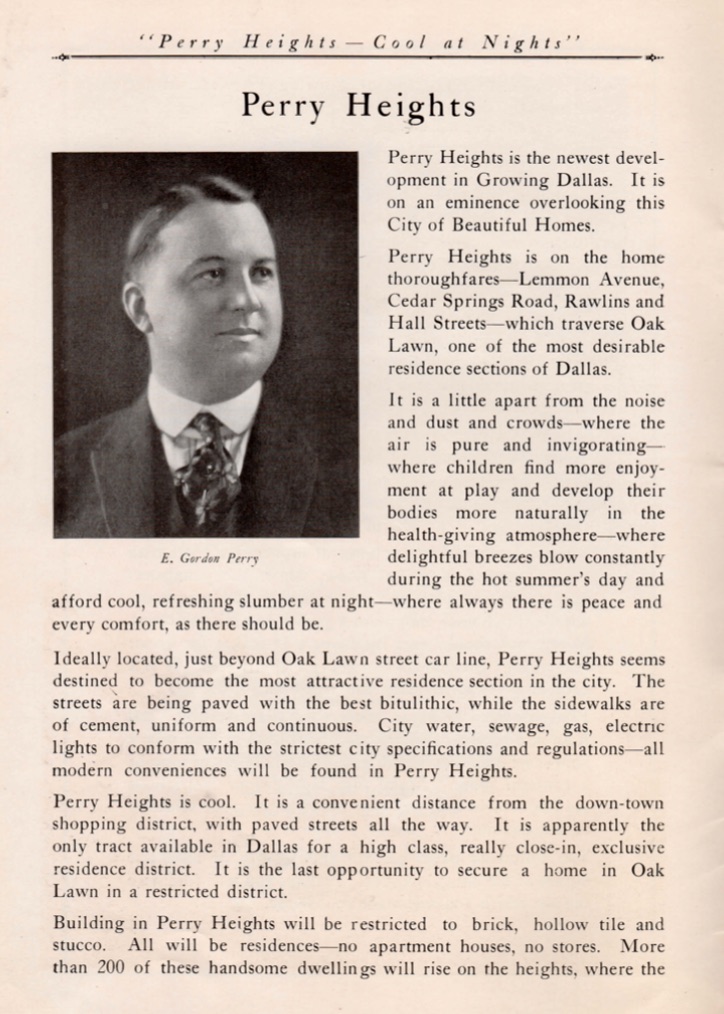
He was active as a director of the YMCA, Boy Scouts, SMU, and the Better Business Bureau, as well as a chairman raising funds for the Salvation Army’s programs. Many of the first residents of Perry Heights were also involved in these same philanthropic organizations. He successfully encouraged the past owner of the Perry Heights development site to donate land for Craddock Park by promising to name the park after him. He had Fooshee & Cheek design the site to purposely have varying-size original lots from 50×150 lots to 75X150 lots to accommodate a variety of house sizes and price points. Perry wanted a variety of families in his ideal neighborhood mixing and encouraging interaction and community. He also demanded several trees planted and encouraged gardens for a natural family environment.
Besides his wealthier business friends, one of his company officers bought into his neighborhood. Jack Taylor started working for Perry in El Paso and moved to Dallas to be the secretary/treasurer of Perry Motors. He and his wife Lenore moved their family of three children (Jack Jr., Marjorie, and Robert) into 4314 Vandelia. Their children and the Perry children (E. Gordon Jr. and Vandelia) all played in the new park as well as the Perry estate which included an 18-hole putting course, a sunken garden, a tennis court, and a pool. Mr. Perry also had a playground on this estate that all of the children of Perry Heights could access.


To add more children to the playground, Mrs. W.H. Rucker, a widow, also moved into the neighborhood at 4512 Vandelia in 1923 with her 6 children (Jean, Mabel, Ethel, Clyde, Carl, and Grafton). Jean and Mabel became beloved local elementary school teachers. Her son, Grafton, and his wife inherited the home and lived there into the 1970s raising their children.
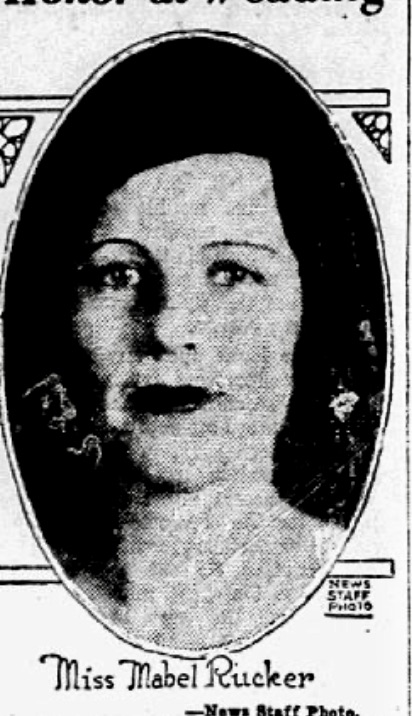
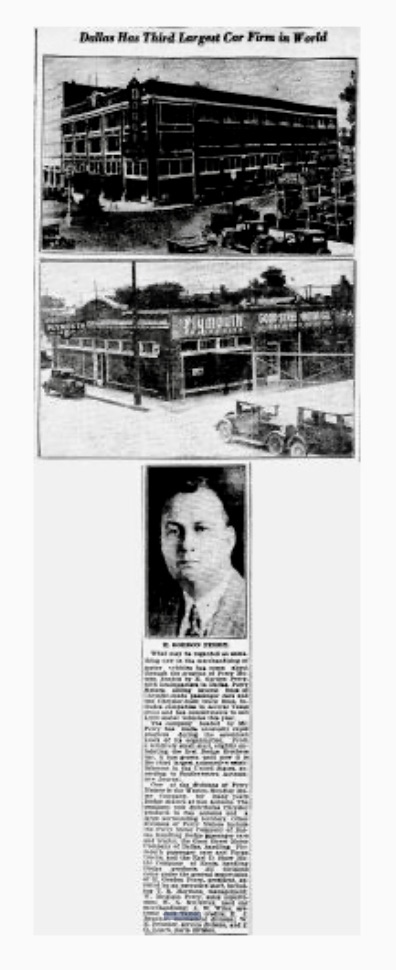
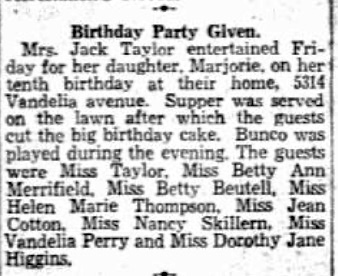

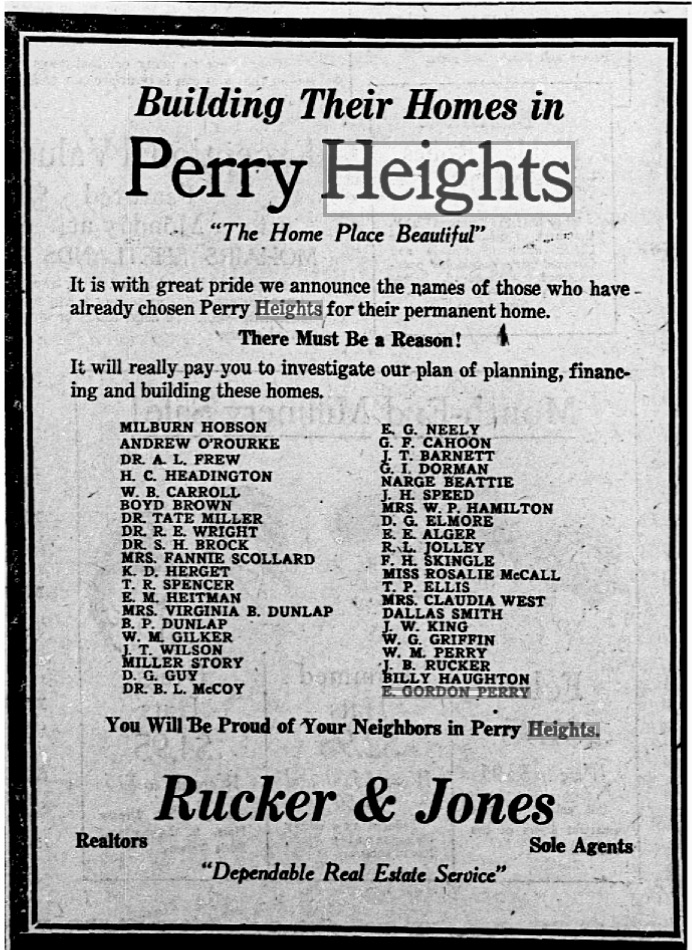
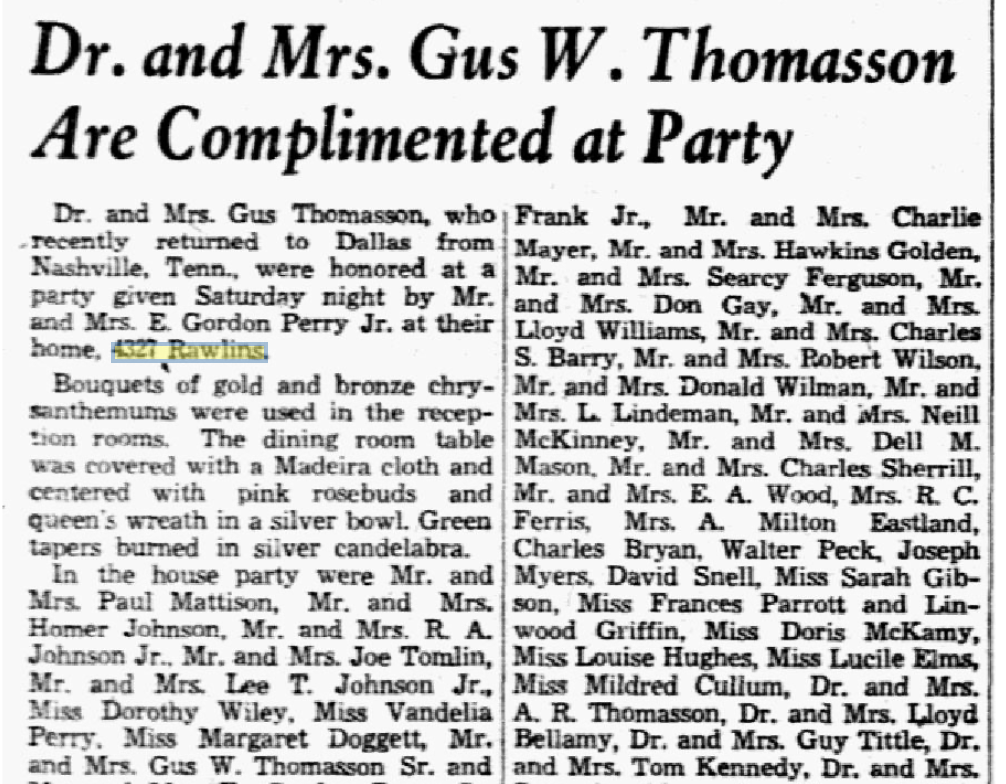
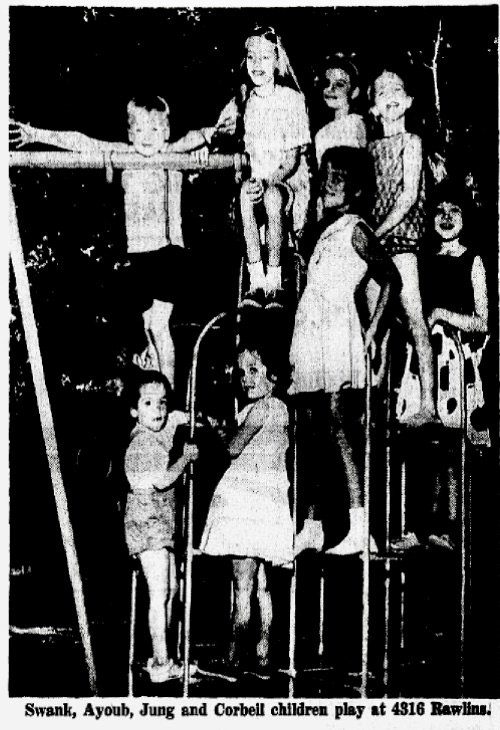
The families were constantly hosting each other’s birthdays, showers, weddings, and special occasions as seen in the social pages of the Dallas Morning News. They all participated in various social clubs such as garden club, women’s club, and charity events.
This close neighborhood spirit was also evident later in the 1970’s when traffic was eroding the neighborhood and the neighbors fought for the blocked streets to preserve the neighborhood. When developers became a threat in the 1990s and wanted to take more of Craddock Park and disturb the neighborhood, the neighbors banded together and fought back.
Today, several close neighbor bonds have formed on various blocks of Perry Heights and there is still a close neighborhood spirit as we get to know each other. I think Mr. Perry would be happy that his dream neighborhood of cooperation and community is still alive and ready for any future threats and challenges that our urban location may encounter with our active Perry Heights Neighborhood Association. By keeping that sense of community and service growing to preserve our neighborhood, future generations can experience the peace and comfort we enjoy now.
